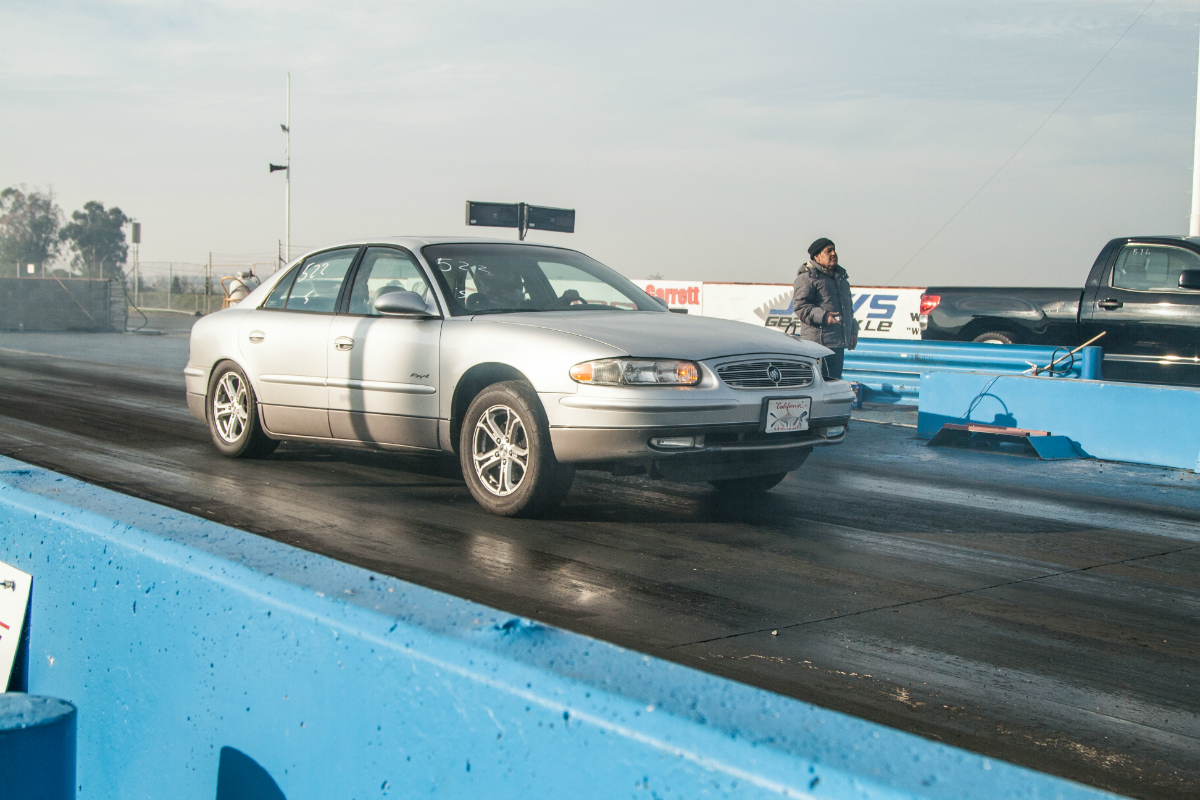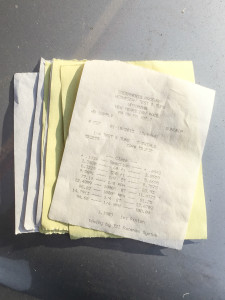
Holy weight transfer, Batman! Looks like we’ll have to stuff some low-buck hockey pucks into the rear springs to curb all that suspension action when we’re making more power!
Photos by: The author and Stanton Performance
The last we left you, our Sleeper Status Buick Regal GS project had just been fortified with a host of ZZPerformance bolt-ons in search of more power and better ETs. Thanks to ZZP headers, a 3-inch catless downpipe and matching exhaust system along with a cold-air intake, a tune, colder plugs, plug wires and a modular pulley system with a 3.4-inch pulley we gained 53 hp at the wheels over the stock baseline.
We then proceeded to visit Sacramento Raceway on a brisk Fall day where despite some sticky Mickey Thompson Drag Radials, traction limited us to a best pass of 13.97 at 99.5 mph. This was an improvement over our best stock pass of 14.68 at 92.55 mph. What was the problem? Our short times! In stock form, using the traction control produced a best 60-ft of 2.24. On our first outing after the mods, the combination of the stickier MT tires and the traction control produced our best 60-ft of 2.20, but it was only a slight improvement over our stock pass. OK, so we knew the short-times were clearly the problem, but why? Air pressure! Yep, we hadn’t aired the MT drag radials down enough for sufficient traction! But as the day turned to night and the temperatures fell, the track predictably disappeared and we had to pack it in. With deadlines looming, we headed home knowing full well there was more in it.

Playing with air pressures and launch techniques finally got our 60-fts in check and helped us cut another .30 off our ET without adding any additional mods.
So a few weeks ago we paid another visit to Sacramento Raceway in order to get a better idea of what our first round of mods with Sleeper Status were really worth. Except this time we brought along a more accurate air gauge and of course, our trusty air compressor. After playing with air pressures (both high and low), we found the sweet spot to be in the 18-20 psi range–previously we’d been around 25-psi. (Yikes! – ED.) and it was too high for sufficient traction. Next, we messed with launch technique; seeing how stalling the converter versus flashing the converter affected 60-fts. Then we tried locking the car in First gear and pedaling it, versus rolling into the gas.
After a dozen passes, we found the best method to launching the Regal was stalling the stock converter and leaving the traction control off. The result? Dead-hooking on the way to a better 2.05 60-ft. This translated into a new best pass of 13.67 at 100.04 mph. For the number-crunchers in the house, that’s an improvement of three-tents just by changing our launch technique and playing with air pressures. As for improvements from stock to our first round of mods, we’ve now successfully chopped 1.01 seconds off our ET and improved our trap speed by 7.5 mph all with simple bolt-ons and some sticky tires.
A quick peruse of the online forums reveals that we’re now running closer to what we should considering our mods. This isn’t to say that some have gone faster with the same or fewer mods – but on this day, at this track, with this car, this was it. More air-pressure induced wheel spin, which of course hurt ET but improved our trap speed, while different launch techniques only hurt our times. In the end, we were content with chopping over a second off our stock ET and picking up 7.5 mph on the back end.
Keep in mind, that all testing was done using California-spec 91-octane fuel, which is the highest-grade of pump gas available to us West Coast guys. Its combustibility is probably comparable to East Coast 89-octane, thanks to the cleaner-burning formulation regulations. Out of all of our testing, we should also point out that we’ve already ditched the engine cover to aid in heat dissipation, the driver’s side headlight to force air into our intake and removed everything out of the trunk for a bit of weight savings.
Now that we’re solidly in the 13s, we can further tear into Sleeper Status for more mods and better ETs. We understand that the order in which we’re adding modifications might be a little out of the norm, but this is the direction the owner wanted to take the project considering his end-goal. What do we mean? It seems that most people don’t add long-tube headers until they’ve ported the blower or added an intercooler, the owner decided to add the exhaust first, building a solid platform for the coming mods. Also, some would have probably already added a Northstar throttle-body by now, but we’re saving that for later. You get the point, everyone has a different idea of how to modify their cars and this project series highlights one man’s path from a stock Regal to an affordable sleeper.
Stay tuned because we’re about to dive into Sleeper Status for another round of mods. With any luck, hopefully we’ll see equally impressive gains next time we hit the dyno and the drag strip. For now, we better get busy spinning those wrenches!

Raised in a house of hotrods, classics and motorcycles, it only made sense that he would blend his love for writing and photography with his love for all things automotive. Armed with a degree in journalism and graphic design, he embarked on a journey into motorsports journalism and has worked for many magazines and Websites chronicling his love for the industry.